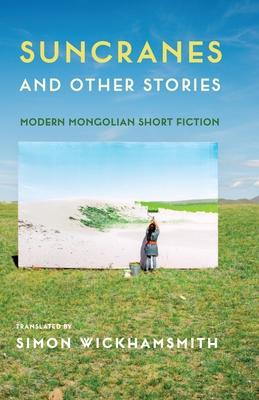Over the course of the twentieth century, Mongolian life was transformed, as a land of nomadic communities encountered first socialism and then capitalism and their promises of new societies. The stories collected in this anthology offer literary snapshots of Mongolian life throughout this tumult. Suncranes and Other Stories showcases a range of powerful voices and their vivid portraits of nomads, revolution, and the endless steppe.
Spanning the years following the socialist revolution of 1921 through the early twenty-first century, these stories from the country's most highly regarded prose writers show how Mongolian culture has forged links between the traditional and the modern. Writers employ a wide range of styles, from Aesopian fables through socialist realism to more experimental forms, influenced by folktales and epics as well as Western prose models. They depict the drama of a nomadic population struggling to understand a new approach to life imposed by a foreign power while at the same time benefiting from reforms, whether in the capital city Ulaanbaatar or on the steppe. Across the mix of stories, Mongolia's majestic landscape and the people's deep connection to it come through vividly. For all English-speaking readers curious about Mongolia's people and culture, Simon Wickhamsmith's translations make available this captivating literary tradition and its rich portrayals of the natural and social worlds.
Book
Suncranes and Other Stories: Modern Mongolian Short Fiction
(Write a Review)
Paperback
$27.78
Over the course of the twentieth century, Mongolian life was transformed, as a land of nomadic communities encountered first socialism and then capitalism and their promises of new societies. The stories collected in this anthology offer literary snapshots of Mongolian life throughout this tumult. Suncranes and Other Stories showcases a range of powerful voices and their vivid portraits of nomads, revolution, and the endless steppe.
Spanning the years following the socialist revolution of 1921 through the early twenty-first century, these stories from the country's most highly regarded prose writers show how Mongolian culture has forged links between the traditional and the modern. Writers employ a wide range of styles, from Aesopian fables through socialist realism to more experimental forms, influenced by folktales and epics as well as Western prose models. They depict the drama of a nomadic population struggling to understand a new approach to life imposed by a foreign power while at the same time benefiting from reforms, whether in the capital city Ulaanbaatar or on the steppe. Across the mix of stories, Mongolia's majestic landscape and the people's deep connection to it come through vividly. For all English-speaking readers curious about Mongolia's people and culture, Simon Wickhamsmith's translations make available this captivating literary tradition and its rich portrayals of the natural and social worlds.Paperback
$27.78